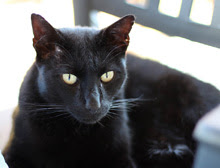I like pumpkin pie and try to make at least one during the holiday season. My pie doesn't resemble the very sweet, highly spiced pies I remember in the US. I cut down on the sugar and spices so that the taste of the pumpkin comes through.
A mini-version of the pie that I made with the leftover filling from the larger pie.
This year I used a butternut squash that I grew in the garden. In past years I've grown pumpkins and used them, but butternut works just as well and has a similar flavor. You could even use sweet potatoes in place of the squash. So here's my modified recipe:
Walt's pumpkin pie
- 2 cups roasted pumpkin pulp (or butternut, red kuri, or other similar squash), see below
- 1 1/4 cups heavy cream (I mix cream with non-fat milk for a lighter pie)
- 1/4 cup white sugar
- 1/2 cup loosely packed light brown sugar
- 1/2 tsp salt
- 2 whole eggs plus 1 egg yolk
- 3/4 tsp ground cinnamon
- 1/4 tsp ground ginger
- 1/8 tsp ground nutmeg
- 1/8 tsp ground cloves or 1/4 tsp ground allspice
- 1/4 tsp ground cardamom
- 1/2 tsp grated lemon zest*
- 1 pie crust
A day or two before you make the pie, roast a pumpkin or squash by cutting it in half, removing the seeds, putting the halves face-down on a cookie sheet lined with parchment paper, then baking them at 350ºF (180ºC) for about half an hour or until the flesh is tender. When the roasted squash is cool, scoop out the flesh and refrigerate it until needed.
Preheat oven to 425ºF (210ºC).
Mix sugars, salt, spices, and lemon zest in a large bowl. Beat the eggs and yolk and add to the bowl. Stir in the pumpkin. Stir in the cream. Whisk all together until well incorporated. I used a stand mixer for this step.
Pour the mixture into a partially baked pie shell (blind bake with pie weights for about 20 minutes then let cool while mixing the pie filling). Bake the filled pie at 425ºF (210ºC) for about 10 minutes. Reduce the temperature to 350º (180ºC) and bake another 30 to 40 minutes until the filling is set and a knife inserted in the center comes out clean. Don't over-bake the pie; the surface will dry out and cracks will form.
If there is any filling left over, you can make mini-pies with leftover crust, or just bake the filling without crust in buttered ramekins. The filling will keep a day or two in the fridge if you're not ready to use it right away.
Cool the pie on a rack before serving with whipped cream. In France, I use un-whipped
crème fraiche with a little brown sugar added to lightly sweeten it.
*I didn't have any lemon zest when I made the pie, so I substituted 1/4 tsp freshly ground coriander seeds. I ground them with a mortar and pestle, but you can use a spice grinder if you have one. The fresh seeds add a nice lemony flavor in place of fresh lemon zest.






































